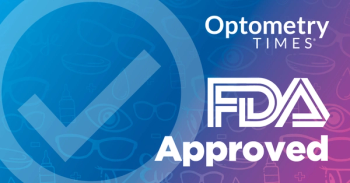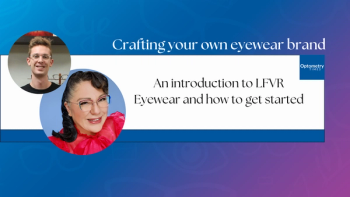
Managing presbyopia heading into the year 2020
Patients don’t have to wait for 2020 to achieve 20/20 vision at near without spectacles or contact lenses. Rather, the advancements we have seen just in the past few years should be enough to help manage their expectations.
It’s 2017, and that means we are that much closer to the optometric equivalent of Y2K-the year 2020. The notion that our calendar year will coincide with the perceptual perfect vision our patients expect from all of our services should elicit some tiny bumps on your skin. Now don’t get too elated-we have almost three years to prepare for this optometric jubilee year.
However, one area that can use the most fine-tuning is our managing of presbyopia. We should also consider how we help our patients cope with the inevitable decay of their relationship with glasses-free near tasks. This will set the stage for years to come.
Patients don’t have to wait for 2020 to achieve 20/20 vision at near without spectacles or contact lenses. Rather, the advancements we have seen just in the past few years should be enough to help manage their expectations.
Previously from Dr. Bloomenstein:
The road less traveled
The road to being glasses-free, much like wireless or hands-free, has to start early. You and your staff should incorporate this road map into the fabric of the practice, the exam, and the psyche of your patient.
Let’s be clear: no one wants to put on reading glasses. Nobody wishes to announce, via glasses, that they are “old,” and none of our patients truly understand the concept of presbyopia. As our patients start to develop the so-called dysfunctional lens syndrome (DLS), then we need to advocate for other options.
My definition of DLS is when the lens is not working optimally any more-like all my presbyopic brothers and sisters.
Related:
Contact lens choice
Contact lenses still provide a seamless opportunity for the near challenged to have good quality of vision without glasses. New technology brings new choices.
SynergEyes launched a multifocal with Duette. Last year we saw the approval of monthly replacement silicone hydrogel Ultra for Presbyopia from Bausch + Lomb. These new additions join a full array of multifocal options that are already in our cabinet-notwithstanding monovision options.
Contact lenses are the perfect bridge, or even the inevitable option, for a glasses-free existence.
Surgery must be an option
Moving from the top of the cornea to in the eye is that much easier when your management of the patient is on a continuum. When we detail to our patients that they are ametropic and need correction, we do not give them one choice. Instead, we lay out the options and communicate our recommendations.
Surgery should be in that discussion as well. LASIK can provide a monovision or even multifocal result; however, this option needs a previous refractive error. In the last year we have advanced our ability to accommodate patients with little to no correction.
Kamra corneal inlay started the ball rolling with the pocket procedure, utilizing an increased depth of focus for near tasks. In 2016 ReVision Optics received FDA approval for Raindrop, a near vision corneal inlay. Both Kamra and Raindrop are a monocular surgery, not invasive, and can be used for patients who are emmetropic but dysfunctional at near.
The management of these patients is no different than any other presbyopic patients we counsel.
Related:
IOLs in play
Presbyopia is a continuous process, and thus managing the expectations and eventual lenticular changes is necessary. Moreover, because your practice has been an active participant in your patients’ close vision demise, you are prepared and excited for the cataract.
Removing DLS and providing the patient with a shiny new lens-like Tecnis Symfony IOL from Abbott Medical Optics with its extended depth of focus or AcrySof IQ ReSTOR +3.00 D Multifocal Toric IOL from Alcon-is better than getting an upgrade on your smartphone.
The new lens in the eye will not become obsolete in a few weeks; it will do all the things the old one could-but better and not wear out.
The year 2020 is right around the corner. If I could develop one product to be a game changer, like the Apple iPhone that is celebrating its 10-year birthday, it would be presbyopia correction.
We have three years to start managing our patients with some great technology, but by 2020 this technology may all be old school-like 20(/)15 at near.
Newsletter
Want more insights like this? Subscribe to Optometry Times and get clinical pearls and practice tips delivered straight to your inbox.


















































.png)


